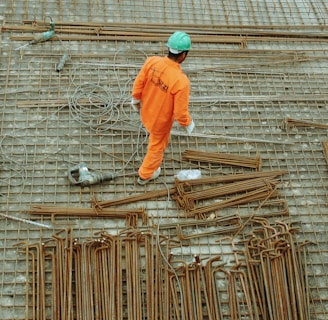Trump's 50% Steel Tariff: A Major Threat to Brazil's Economy and US Consumers?
Trump's 50% Steel Tariff: A Major Threat to Brazil's Economy and US Consumers? How a 50% US tariff on steel imports could severely impact Brazil, the second-largest exporter. Understand the ripple effects on global trade, Brazilian industries, and even US consumer prices.
NEWS
Unveiled Brazil
6/2/20253 min read


Trump's 50% Steel Tariff: A Major Threat to Brazil's Economy and US Consumers?
The impending imposition of a 50% tariff on steel and aluminum by the Donald Trump administration poses a significant threat to the global economy, and particularly to Brazil. As the second-largest steel exporter to the United States, having shipped 3.7 million metric tons between March 2024 and February 2025, Brazil is at the forefront of the potential impacts of this protectionist measure. The consequences of such a decision will extend across multiple sectors of the Brazilian economy, altering everything from the competitiveness of its steel mills to the daily lives of consumers.
Direct Impacts on Brazil's Economy and Trade Balance
The escalation of steel import tariffs to 50% could be a devastating blow to the competitiveness of Brazilian steel in the US market. With a drastically higher entry cost, Brazilian steel would become significantly less attractive to US buyers, who would naturally seek cheaper alternatives. This loss of competitiveness could translate into a sharp decline in exports, resulting in a substantial reduction in revenue for major national steel companies. Companies like Gerdau, Usiminas, and CSN, which have a considerable portion of their operations geared towards the foreign market, would feel the impact directly on their financial statements.
Additionally, Brazil's trade balance, a vital indicator of the country's economic health, would face considerable imbalance. The United States has historically been one of the main destinations for steel produced in Brazil. A drastic reduction in exports to this market would mean a decrease in foreign currency entering the country, impacting the real's exchange rate against the dollar and, by extension, the cost of imported products for Brazilian consumers. The pressure on the trade balance could even lead to a deficit in key sectors, exacerbating Brazil's dependence on other markets and commodity exports.
Repercussions in the Domestic Market and the Search for Balance
With the expectation of a retraction in exports to the US, Brazilian steel mills would be forced to redirect their production to the domestic market. This sudden increase in supply in a market that often operates with its own demand and supply dynamics could generate downward price pressure on steel within Brazil. For sectors that use steel as a primary input, such as civil construction, the automotive industry, and machinery and equipment manufacturing, this price drop could initially be a relief in their production costs. However, the scenario is not without risks.
If domestic demand is not robust enough to absorb the surplus steel that will no longer be exported, the consequences could be severe. Steel companies might be forced to implement production cuts to avoid excessive inventory buildup and deepen price declines. This reduction in productive activity, in turn, could lead to mass layoffs in the steel sector, one of the country's largest industrial employers. The impact would spread throughout the value chain, affecting iron ore suppliers, logistics, and related services, creating a domino effect on the local and regional economy.
Impact on National Consumers: A Price Seesaw
The end consumer, albeit indirectly, would also feel the effects of Trump's tariff measure. The behavior of steel prices in the domestic market would be crucial. If steel mills choose to drastically reduce production due to declining exports and the domestic market's inability to absorb the surplus, the limited supply of steel could, paradoxically, lead to upward price fluctuations. This would increase the cost of products that rely heavily on steel, from automobiles and home appliances to construction materials, directly impacting consumers' wallets. The cost of homes and apartments, for example, could be influenced by this fluctuation.
On the other hand, in a scenario of excess supply in the domestic market, driven by export difficulties, competition among steel mills to sell their production could lead to a sharp drop in steel prices. This situation, if sustained, would directly benefit companies that use steel as a raw material, allowing them to reduce their production costs and potentially pass these savings on to consumers in the form of lower prices for their final products. However, it is essential that domestic demand is stimulated and that the sector does not suffer from idle production capacity.
Strategies and Challenges for Brazil
Given such a complex scenario, the Brazilian steel sector and the government will face the challenge of adapting quickly to minimize losses and find new opportunities. Diversification of export markets will become a priority, with Brazil seeking to strengthen its trade relations with other economic blocs and countries, such as the European Union, Asian countries, and Latin America. Robust diplomatic negotiations to reverse the tariff or obtain specific exceptions for Brazilian steel would be crucial.
The Brazilian government, in turn, may need to intervene with export incentive policies, such as special credit lines, bureaucratic streamlining, and preferential trade agreements, to boost sales to new destinations. Furthermore, promoting domestic steel consumption through infrastructure investments and programs to encourage national industry can help absorb part of the surplus. The crisis, although challenging, can also be a catalyst for modernization and the pursuit of greater efficiency in steel production in Brazil, making the sector more resilient to external shocks in the future. Adaptability and agility in response will be crucial to mitigate the impacts and protect the national industry.
